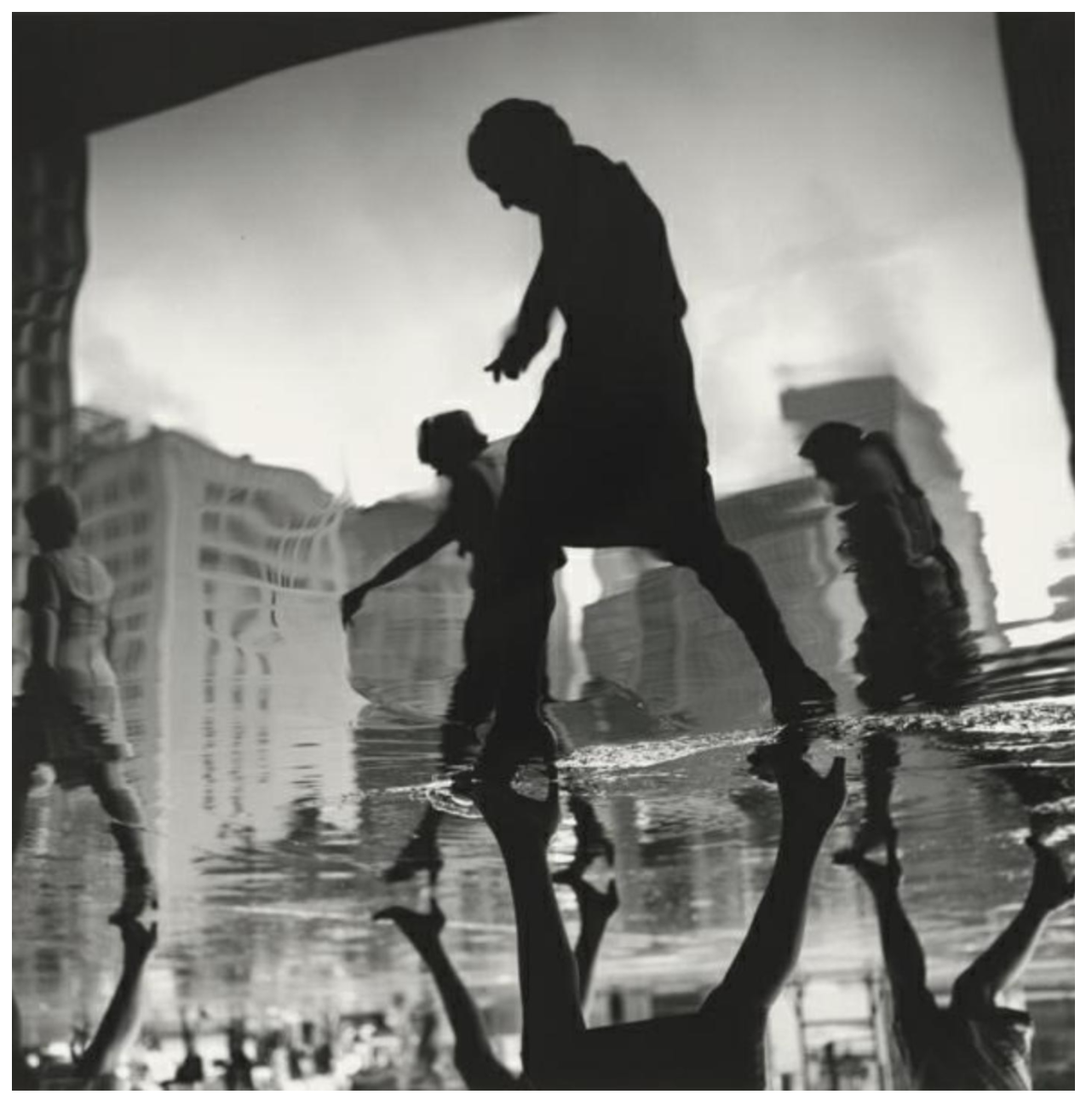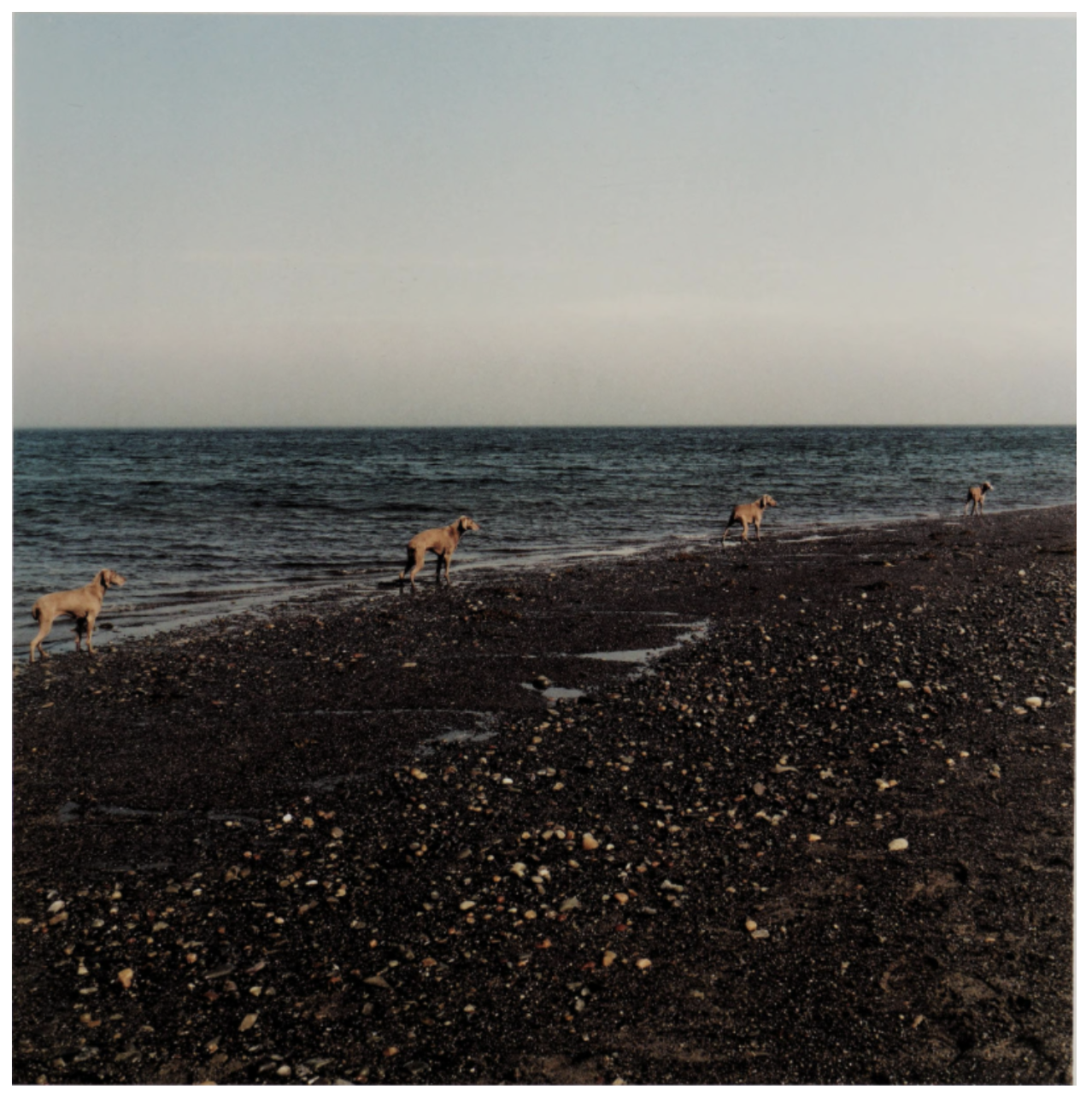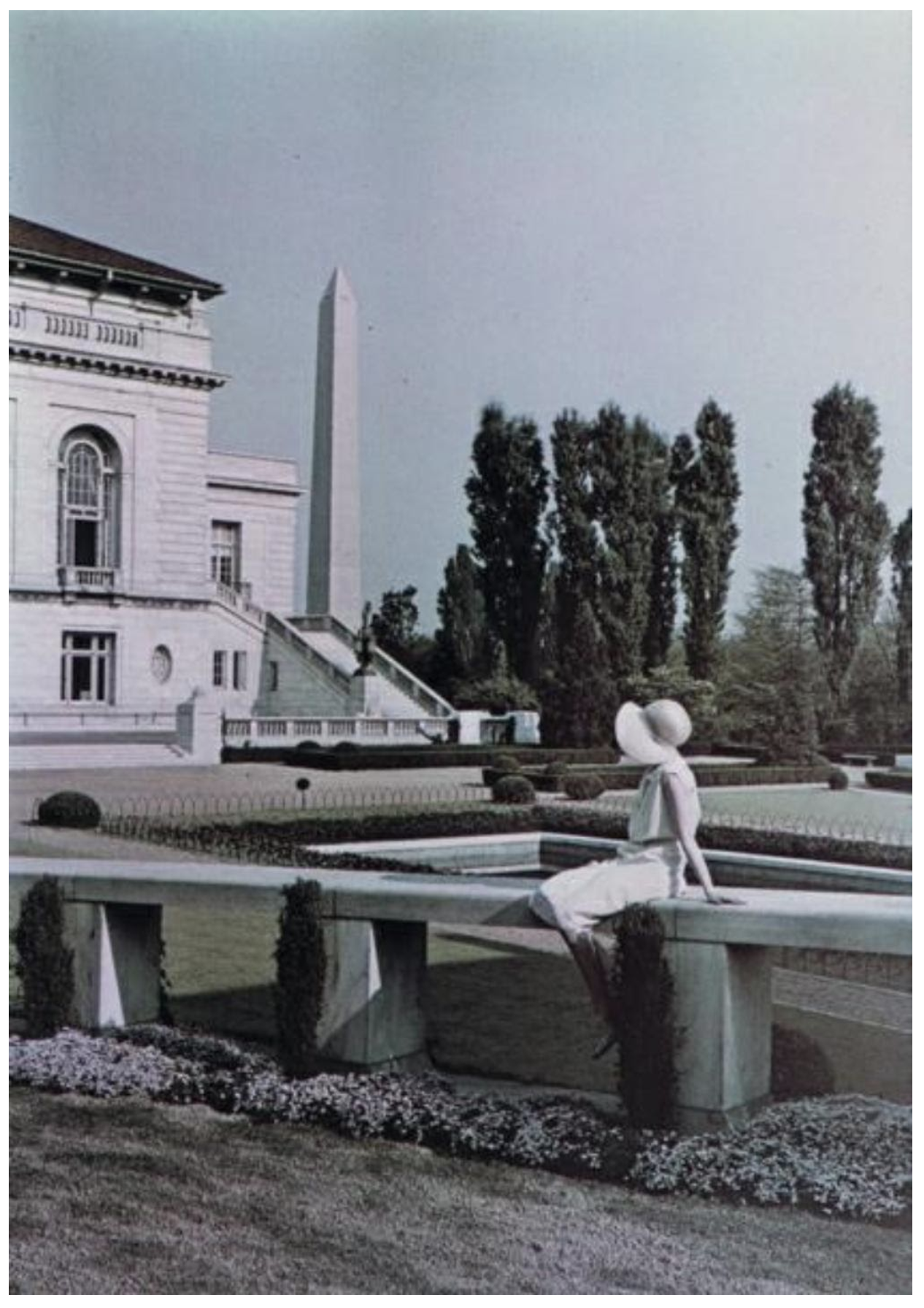Relearn Metamorphosis
Arthur Tress
Gelatin silver print
20 x 16 in.
Gift from the Trustees of the Corcoran Gallery of Art (Gift of Dr. and Mrs. John V. Knaus)
© Arthur Tress
Text by Hannah Kim
Office Workers Returning Home, 1966
Image Description:
In this photograph, Arthur Tress captured women—office workers, per title— in heels, returning home. Perhaps because of the rain or a flood from somewhere, the ground is filled with water and the reflection in the water almost looks like the child walking. In the late 1950s and early 1960s, Tress began to search for ways to exceed the everyday look of life, to go beyond experience. He tried to exert his feeling for the world with a sense of the extraordinary.
Artist Bio:
As a teenager, Arthur Tress spent hours in a crumbling amusement park in Coney Island with his camera. He then decided to use his ability to raise environmental awareness about the economic and human costs of pollution. After graduating from college, Tress embarked on an international journey that took him across the Americas, Africa, and Asia. During the sojourn, he did not only capture the people but focused on their lives. In the late 1960s, Tress’ photography gradually evolved from documentary moments or aesthetic compositions to a more surrealistic and erotic realm, combining improvised elements of life with stage fantasy. Tress once said he was influenced by filmmakers, including Ingmar Bergman, Alfred Hitchcock, and Federico Fellini.
William Wegman
Dye coupler (chromogenic) print
14 x 11 in.
Gift from the Trustees of the Corcoran Gallery of Art (Gift of the artist)
© William Wegman
Text by Hannah Kim
Tidal, 1999
Image Description:
William Wegman’s four dogs—Battina, Chippy, Chuundo, and Crooky— are walking in line along the tideline, distancing each other. At the beginning of 1999, the Nature Conservancy invited photographers to take pictures at some of the landscapes where nature had not yet been lost and still sustainable. Wegman ventured with his dogs to Cobscook Bay, an echo of the larger and famous Bay of Fundy nearby. Cobscook Bay is known for its twenty-foot tides, and Wegman captured an intriguing moment where dogs and nature merged, reminding people of the importance of peaceful coexistence.
Artist Bio:
Wegman is best known for the portraits of his Weimaraner dogs. He got his first Weimaraner while he was at Long Beach. The first generation of Wegman’s dogs was named after the artist Man Ray. Wegman and his dogs had a life-long partnership, and Man Ray became a central figure in Wegman’s works from the 1970s. Wegman’s photographs and videos have appeared in various films, books, advertisements, and television programs. The first Man Ray portraits might have been fortuitous. But as a conceptual artist, Wegman seems to have found his destiny in the subject.
Clifton R. Adams
Dye imbibition print from additive color screen plate (Agfacolor)
41.91 H x 27.78 W cm (16 1/2 H x 10 15/16 W in)
Gift from the Trustees of the Corcoran Gallery of Art (Gift of Eastman Kodak Company)
© National Geographic Society
Text by Shengyuan Liu
Woman in Garden Behind The Pan American Union Building, Washington, D.C., 1930
Image Description:
This photograph highlights the women in a white dress sitting in the garden behind the Pan American Union Building in Washington, DC. In the far back, there is the familiar form of the Washington Monument. In 1930, the United States had just entered the Great Depression period, and women started to enter the workforce under financial pressures. However, the absence of other people or any information about the woman in the white dress leaves this photograph open for interpretation. The straw hat and the white dress indicate that summertime was when this photograph was taken, and the tinted color was a popular 20th century photographic printing technique called dye imbibition, or dye transfer, which was first used for monochromatic images.
Artist Bio:
Clifton R. Adams was a photographer for National Geographic from 1920 until his death in 1934, four years after this photograph was taken. Adams travelled through the United States, Central America, and Europe during his time at National Geographic with most of his photographs documenting people living in the countryside and rural life.
The future is radical! And in order to get there we need to all work together to relearn our systems and behaviors that continue oppression (individually and systemically). It is more important than ever to redistribute our time, energy and resources to support our community.
We need to acknowledge that the city of Washington DC occupies Piscataway land.
Please use this link to learn about the Piscataway "LandBack Project"
(Also, find a link to donate to the project at the bottom of that page!)
And please use these links for more information:
"Indigenous Tribes of Washington DC" written by Donavan Begay, citizen of the Navajo Nation for American Library Association
"Native Peoples of Washington DC" written by National Park Service, U.S. Department of the Interior
Click to Continue to the Next Group of Photographs:
Or Return to Full Gallery:





